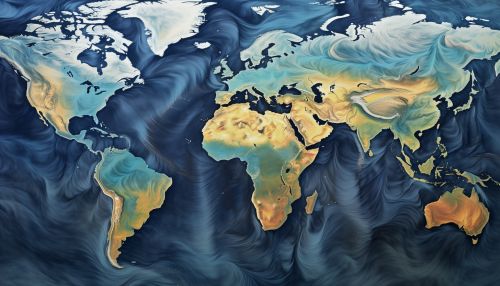The Science of Earths Atmospheric Dynamics and Weather Prediction
Introduction
The science of Earth's atmospheric dynamics and atmospheric physics is a complex and fascinating field that seeks to understand the physical processes that govern the behavior of our planet's atmosphere. This includes the study of the Earth's weather systems, the forces that drive them, and the methods used to predict their behavior.
Atmospheric Dynamics
Atmospheric dynamics is the study of the large scale and small scale motions of the atmosphere. The large scale motions are generally referred to as the general circulation, while the small scale motions are the weather. The weather is driven by imbalances in the Earth's energy budget, caused by differences in the amount of sunlight absorbed at the surface. These imbalances drive the circulation of the atmosphere, which in turn determines the weather.


The Earth's atmosphere is a fluid, and as such it obeys the laws of fluid dynamics. These laws can be used to describe the motion of the atmosphere, and are the basis for the mathematical models used in weather prediction. The most important of these laws are the Navier-Stokes equations, which describe the motion of viscous fluid substances.
Weather Systems
Weather systems are the manifestation of the Earth's atmospheric dynamics. They are the result of complex interactions between various atmospheric phenomena, including temperature, humidity, pressure, and wind. These interactions give rise to a wide variety of weather conditions, ranging from calm and sunny days to violent storms.
Weather systems can be classified into three main types: cyclones, anticyclones, and fronts. Cyclones, also known as low pressure systems, are areas of the atmosphere where the pressure is lower than its surroundings. Anticyclones, or high pressure systems, are areas where the pressure is higher than its surroundings. Fronts are boundaries between air masses of different temperatures and humidities.
Weather Prediction
The prediction of weather is a complex task that requires a deep understanding of the Earth's atmospheric dynamics. This is achieved through the use of mathematical models that simulate the behavior of the atmosphere. These models take into account a wide range of factors, including temperature, pressure, humidity, wind speed and direction, and solar radiation.
The process of weather prediction begins with the collection of data from a variety of sources. This includes ground-based observations, satellite data, and measurements taken by weather balloons. This data is then input into the mathematical models, which simulate the future state of the atmosphere.
The accuracy of weather predictions has improved significantly over the past few decades, thanks to advances in our understanding of atmospheric dynamics, improvements in data collection, and the development of more sophisticated mathematical models. However, weather prediction remains a challenging task due to the chaotic nature of the atmosphere.
Conclusion
The science of Earth's atmospheric dynamics and weather prediction is a complex and fascinating field that plays a crucial role in our everyday lives. By studying the physical processes that govern the behavior of our planet's atmosphere, scientists are able to predict the weather, helping us to prepare for and respond to a wide range of weather conditions.
